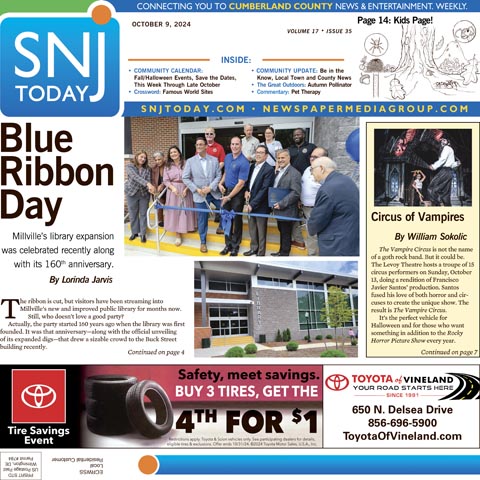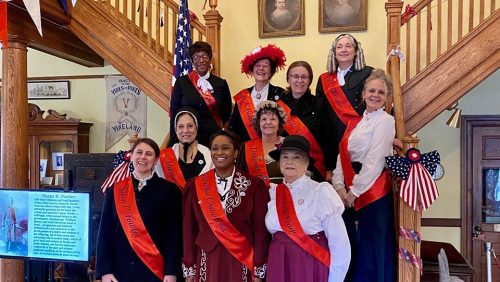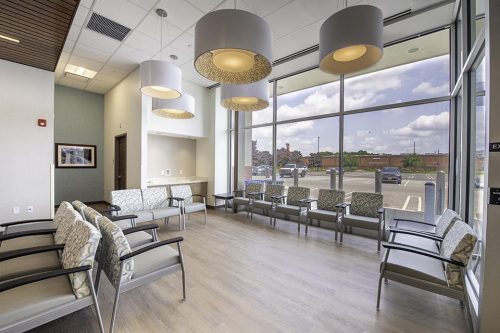As its name indicates, Glassboro was once a town linked to the profitable glassworks business, but its existence pre-dates that of Millville’s legacy in the field.
According to the Old South Jersey Glass and Antiques website article, “History of Glass Making in Glassboro, NJ,” the birth of Glassboro can be traced to the moment when Solomon Stanger purchased 200 acres of land on September 23, 1779 to launch a glass factory with his brothers in Gloucester County.
The Stangers hailed from Dornhagen, Germany, where they had owned and operated a glass factory. According to William McMahon’s South Jersey Towns, the family saw a better opportunity in America but was denied permission to sell its Dornhagen business. Forced to abandon it, the Stangers “fled to Rotterdam, Holland, and sailed to Portsmouth, England,” where they obtained passage on an English ship, Betsy, bound for Philadelphia.
The Stanger family settled in Alloway, New Jersey, with five sons obtaining jobs at the Wistar Glass Factory. Two sons became apprentices for the company but, as McMahon explains, one son soon left. His departure violated the agreement that required him to remain until he had completed his apprenticeship, and a $20 reward for his capture and return was offered in the Pennsylvania Chronical [sic] and Universal Advertiser.
Within five years, his siblings had also tired of Wistar and decided to open their own glassworks. It took two years after Solomon purchased the land in Gloucester County to construct a factory for what would become Stanger Glass. It opened in fall 1781.
Unfortunately, the Stanger brothers soon encountered a problem not of their making. “The Stanger brothers had financial problems right from the start,” the Old South Jersey Glass and Antiques website explains. “Congress revalued the existing currency and left the large and very experienced glass blowing family no choice but to sell a share of their glassworks to pay off debts.” By 1784, the addition of a new partner from Salem County, Colonel Thomas Heston, foretold the changes that were in store for the business.
Within two years, Heston and another Salem businessman, Thomas Carpenter, became the owners of the Stanger operation, which would soon be called Olive Glass Works. Rather than abandon the family that had founded the glassworks, the new owners quickly hired some of the Stangers. While the company primarily concentrated on producing bottles and hollowware, the new ownership saw fit to add a furnace to allow for the manufacture of window glass and flint ware.
In 1802, the year Heston died, the village that housed his factory took on the name Glassboro. According to the Old South Jersey Glass and Antiques website, the Heston-Carpenter company continued until 1808, when Carpenter’s son Edward and another individual, Peter Wickoff, took control. Following Edward’s death in 1813, David Wolf purchased the business and partnered with Isaac Thorne and Daniel Focer. By 1821, Thorne became sole owner before selling Olive Glass Works three years later to Jeremiah Foster, who merged it with Harmony Glass Works and retained the latter’s name.
Online sources report that Harmony Works had been founded in 1813 by members of the Stanger family and other area glassblowers. It is described by the Old South Jersey Glass and Antiques website as having been “a large operation with several factory buildings and a few houses for workers.”
By 1838, Thomas H. Whitney bought the Harmony Works business and, with his two sons, identified by McMahon as Heston’s grandsons, rechristened it Whitney and Brothers. After his death it was renamed Whitney Brothers and finally Whitney Glass Works.
McMahon explains that “while the glass industry declined elsewhere in South Jersey, Glassboro kept good market contacts. [The town] “was on a stage line operated between Camden and Cape Island (Cape May City). Heston’s Tavern, built in 1790 as a replacement of Solomon Stanger’s log-house tavern, was the stage terminal.”
The Stanger family remained involved in the profession, even opening a new factory in proximity to Harmony Works, but “in the end, only the Whitney Brothers Glass Works remained,” the Old South Jersey Glass and Antiques website reports. McMahon writes that the Whitney Brothers preserved “the original Wistarburg and Stanger art with regard to color, form and decorations that are associated with what is known among collectors as South Jersey glass.”









